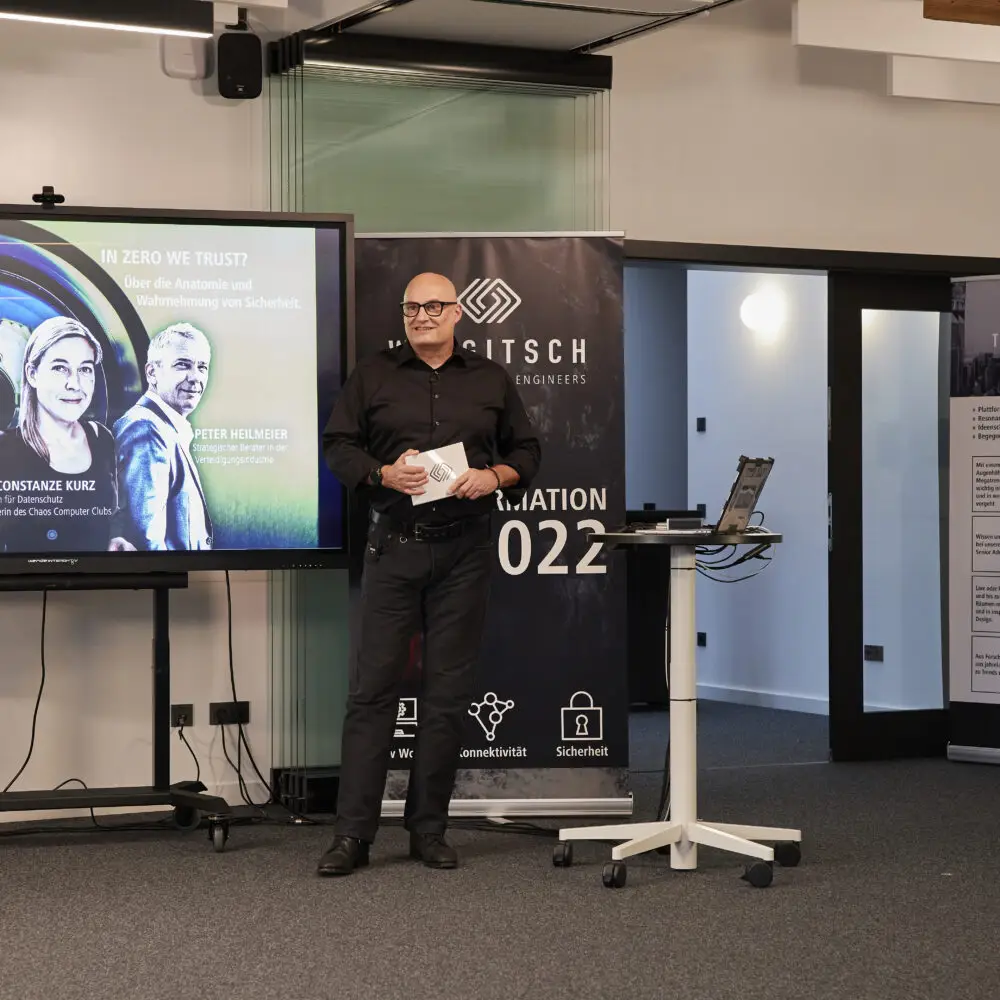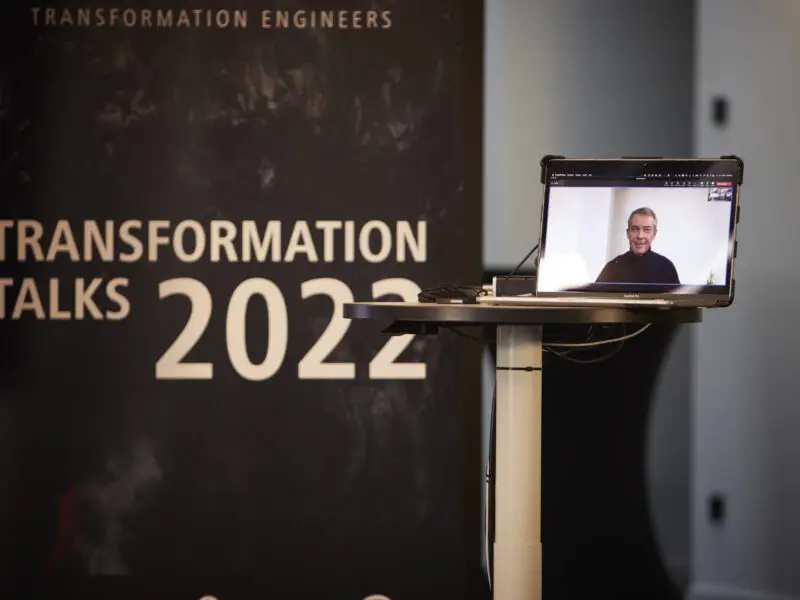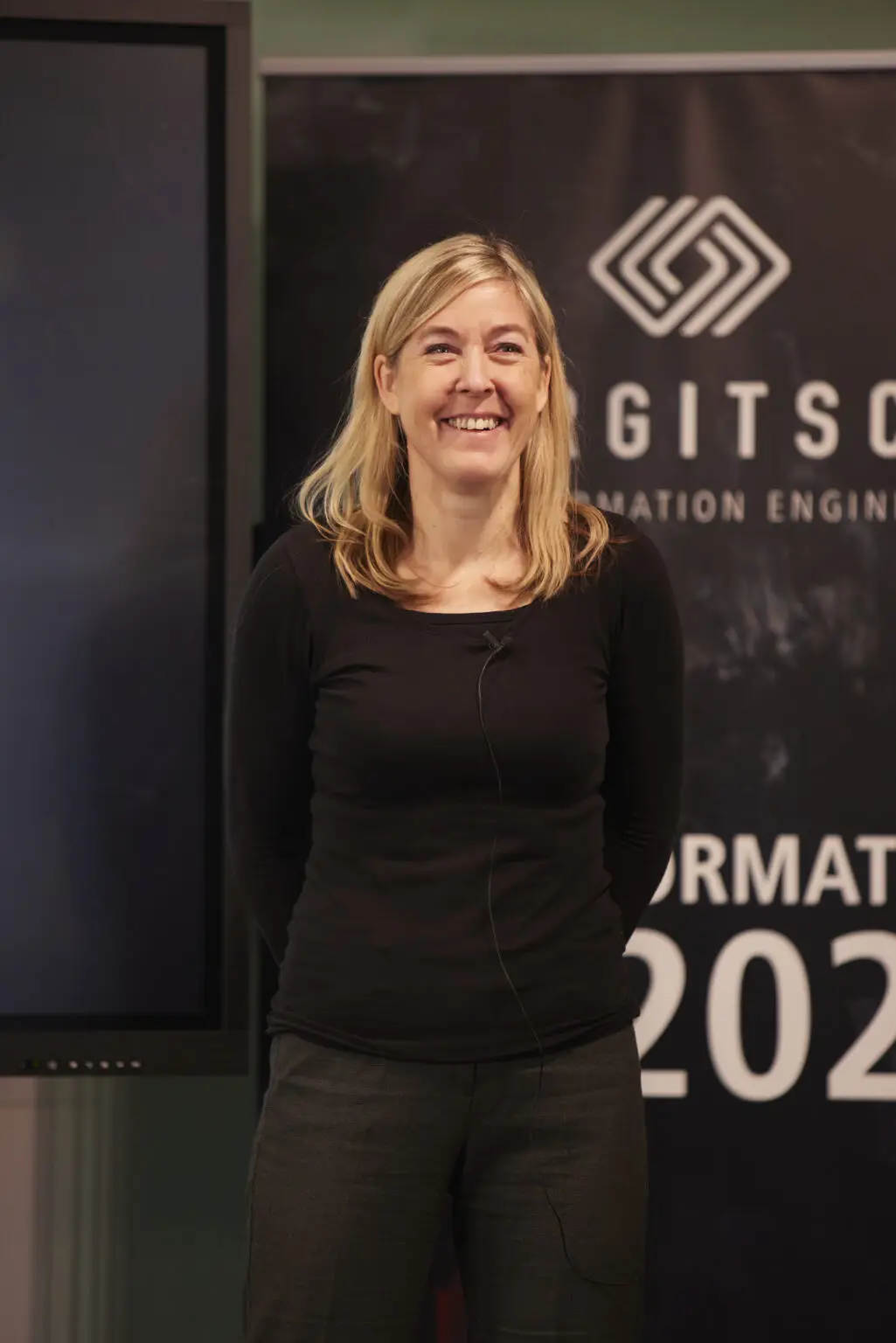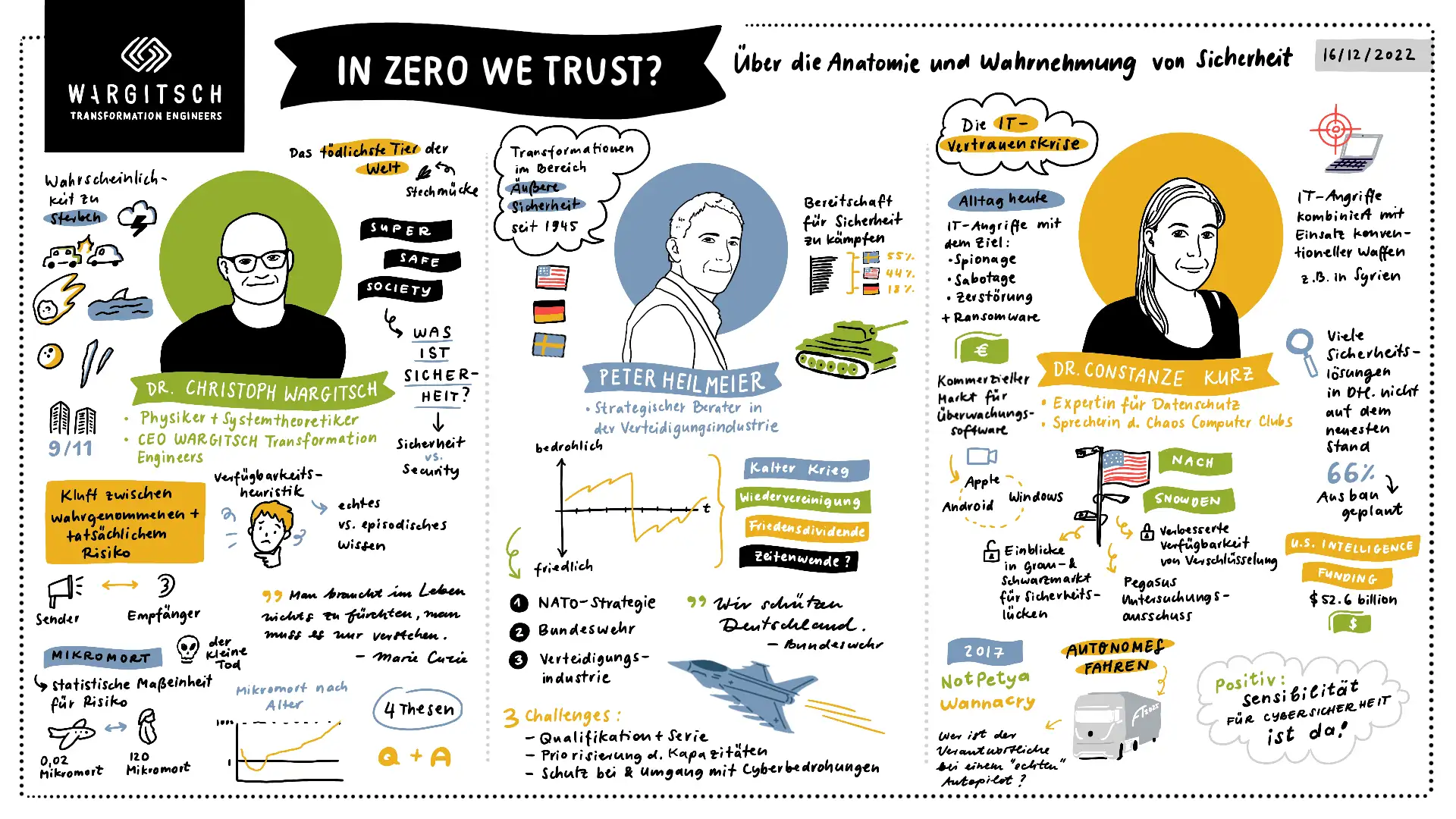Our fourth Transformation Talk focused on the topic of security. In keeping with the title of the event (“In Zero we trust? On the anatomy and perception of security”), three experts provided fascinating insights into different areas of expertise.
Recent events such as the pandemic and the war in Ukraine put the focus in terms of security back to the public sphere and even move it back into a traditional, military context. However, the dynamics and the approach to even such familiar threats have changed tremendously over the past 20 years: Nowadays, the overall view integrates economic, ecological as well as digital aspects. Measures that create security have become more compartmentalized and highly mobile. Accordingly, security is not a state, but a dynamic process that must be actively developed again and again with resilience and flexibility. In the 4th Transformation Talk with Dr. Christoph Wargitsch (CEO, host, physicist and systems theorist), Dr. Constanze Kurz (cybersecurity expert) and Peter Heilmeier (strategic consultant in the defense industry), we jointly made the perception of risk and security, the development of the megatrend and digital threats the subjects of discussion. From the different perspectives, we thematized how organizations can succeed in coping with changing phases of security and (sometimes necessary) uncertainty.
Presentation 1: The risk, our mind and the concomitants

Dr. Christoph Wargitsch, CEO of the WARGITSCH Transformation Engineers, starts his presentation with a striking comparison of the death probability of a falling coconut with the death probability of a shark attack: 15 times as many people are killed annually by a coconut (150 deaths per year) than by a shark (10 deaths per year). Presumably, many of us would have estimated the probabilities of death from these two events the other way around. On the one hand, the shark: An animal portrayed dangerously in movies and TV, swimming in the dark, mysterious ocean. On the other side, the coconut, which we tend to associate with vacation, sun, beach, and sea. There seems to be a large gap between risk perception and the actual risk probability. Christoph Wargitsch explains: “Fear is not caused by statistics, but by the accompanying circumstances.” These “accompanying circumstances” influence our risk assessment and contribute to distorting our perception of safety. Safety – a basic psychological feeling, a megatrend, and often the foundation of our actions.
Therefore, it is important to build an appropriate risk communication, and to ensure the understanding of the communicated risks. However, this is easier said than done, because various psychological phenomena hide behind the complex topic of risk perception. Wargitsch cites the fear of shock risks, a principle developed by the experimental psychologist Steven Pinker: “When many people die at the same time, react with fear and avoid the situation”, he explains, continuing with: “After 9/11, the brain reacted with great fear because many people died at the same time. The controversial and contradictory: When just as many or even more people die over a longer period of time, we’d remain calm. Only in the US, about 35.000 people die in traffic accidents each year, yet anxiety is lower.” To avoid getting lost in the complexity of psychological risk perception, Wargitsch summarizes the fear of risks into two basic principles: social imitation as a protective mechanism (= “fear what your social group fears”) and biologically prepared learning (= more or less collective fears, such as of spiders or snakes). At the end of his speech about the broad subject area of risks, the CEO of the Transformation Engineers creates an apt segue to the other two speakers with a quote of Marie Curie: “‘You don’t need to fear anything in life, you just need to understand it. Now it is time to understand more so that we fear less.’ Understanding more is the goal of the Transformation Talk. I hope my presentation and our speakers’ presentations can make our contribution to understanding.”
4 theses on the megatrend security by the Zukunftinstitut
- Security is not a state, but a process.
- Resilience requires a systemic mindset.
- Uncertainty is an opportunity.
- Trust technology becomes a guarantor of security.
Presentation 2: Walking a tightrope between threat and peacefulness
Peter Heilmeier, strategic consultant at MBDA Deutschland GmbH in Schrobenhausen, delivers his lecture on “transformation processes in the area of external/national security”. He provides his input from the “outside” in several respects – including being digitally connected to the Transformation Talk due to an illness. The focus of his talk is on the splay of perception and the different media portrayals in the area of external/national security and the armament industry: “There are major differences here, both nationally and individually. But where does the different perceptions come from?” Heilmeier first makes the complex topic tangible by looking at the transformation of the perception of external security in Germany. Using a fever chart, he shows several factors influencing the perception of security from threatening to peaceful. “After the war and with the founding of the NATO as well as a little later the Bundeswehr, security was very important to people,” Heilmeier elaborates. From the post-war period until today, various factors and events have played their part in changing the perception of security and the perception of threat and peacefulness. As examples, the speaker cites the ongoing Korean conflict, the Cuban Missile Crisis accompanied by fears of nuclear strikes, 9/11, and the Afghanistan mission with an increasing perception of war conditions. All factors that have an influence on the fever chart also affect the national/external perception of security in Germany. For a more precise understanding, Heilmeier clarifies the term: “External or national security describes the security of a state or a group of states from threats of a military nature by other states or groups of states.”
In the course of this definition, he also addresses the transformation phases of the Bundeswehr. From massive developments in rearmament from 1960s to 1980s, to the considerable staff cuts after German reunification, to the complex situation of the armed forces today: The transformation of the Bundeswehr is shaped by the perception of security. “After German reunification, the following signal was clearly sent to the young generation: World peace before rearmament. Today, the Bundeswehr’s slogan is no longer ‘We serve Germany,’ but ‘We protect Germany.'” Heilmeier explains that our national need for security will continue to undergo further transformation processes in the future. One example: “The protection and handling of cyber threats.”

Presentation 3: About IT security gaps and attributional problems

Dr. Constanze Kurz is the speaker of the Chaos Computer Club and became a technical expert at the Federal Constitutional Court during the appeal procedure against data retention due to her research on data protection and data security. At the WARGITSCH Transformation Engineers talk about security, she talks about IT security and how it can be possible to create more trust in IT again. At the beginning of her presentation, Kurz creates a link to her previous speakers: “IT is constantly connected to both risk perception and the military.” Several factors have an impact on our day-to-day perception of IT, most notably, presumably, the multiple IT attacks we are currently hearing about. Ransomware (= extortion trojans) is one of the most well-known examples. “There is an attributional problem,” Kurz says, and continues: “You rarely know: Who are the offenders?” It’s a late-breaking topic as the commercial market for surveillance software and hacking services is booming. For many non-professionals and laypersons, however, this subject area is hardly tangible and understandable. Thus, the risk perception in IT security is influenced: “Is the actual situation also present in our perception? Do we realize that there is a whole army of mercenaries? People tend to think of mafia-like structures in ransomware, but they don’t think that there’s an actual whole market behind it with large sums of money and intermediaries”, Kurz explains. Commercial hacking is lucrative, according to the expert. We should address this issue and the security gaps in our society or within our cultural sphere. Why? “We are the victims!” Kurz explains that our security solutions are not always up to date.
A proactive modernization of the expansion of technologies is necessary, she says, and is also something we collectively strive for. This is due, among other things, to various historically relevant events. For IT security, the Snowden case was a turning point with far-reaching consequences. The perception in the area of IT security is often characterized by fear and apprehension due to a lack of expertise. This is likely to change soon. Kurz explains why: “We have better insight into the gray and black market for IT security vulnerabilities. There is also a growing awareness of the issue. At the end of the day, most of us give their entire lives into technologies.” The dependence on digitization – a reason to constantly rethink and also adapt our perception of and efforts towards IT security.
Impressions of the fourth Transformation Talk
The essence of the fourth Transformation Talk: Alexandra Wiebe-Kaaden (Creative Director and Chapter Lead Communication Design) has bundled the most important contents during the expert presentations in an impressive graphical recording.
